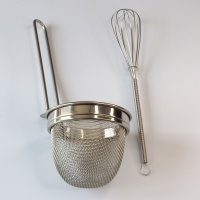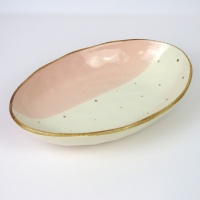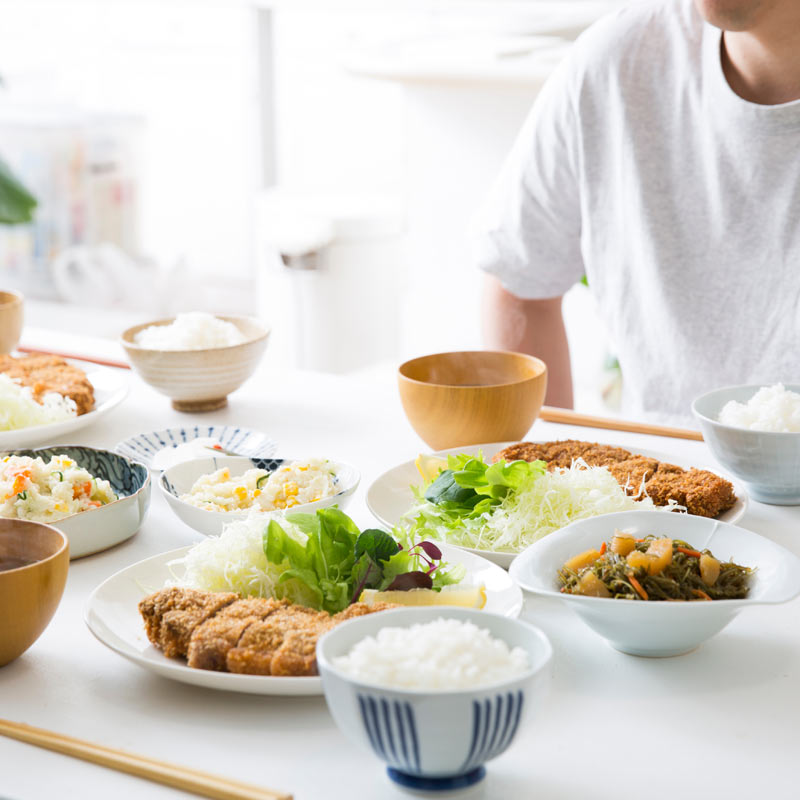Making Japanese food at home can seem difficult and a lot of bother, which it is if you want to do it well! Many recipes require a lot of typically Japanese ingredients and sometimes specialist kitchen equipment that are hard to find, especially if you live in a rural area.
However, it’s not always necessary to use fancy ingredients and you can still create good home cooked Japanese inspired food with a few swaps and creative thinking. And, of course, it’s going to be more enjoyable to make and eat if you haven’t had a lot of stress and cost to find exactly the right elements for a particular dish.
Through my own home cooking experience, I’ve made a list of some easy wins for you to make authentic looking and tasting Japanese food that’s delicious, quick and use every day ingredients or at least ones that you can find at most large supermarkets.
No hassle curry rice

Curry rice in Japan is a serving of sticky white rice with a rich meat or vegetable curry. It’s delicious, very Japanese, and, unsurprisingly, popular with western people too!
Making curry sauce from scratch is always going to be time consuming and easy to get wrong. However, I have never seen any recipe that tells you it’s OK to use ready-made blocks of curry roux to achieve the thick spicy sauce despite the fact that this is how many Japanese people make curry sauce at home.
You simply chop your vegetables and meat into nice chunky pieces, stew them in water until everything is cooked through and then mix in the roux blocks at the end before serving. Easy!
You can find curry roux in the Asian section of most big supermarkets:
- S&B Golden Curry at Tesco
- S&B Golden Curry Sauce Mix at Waitrose
- Yutaka Japanese-Style Katsu Curry Sauce at Sainsbury's
- S&B Tasty Curry, Medium Hot at the Japan Centre
Simple katsu curry
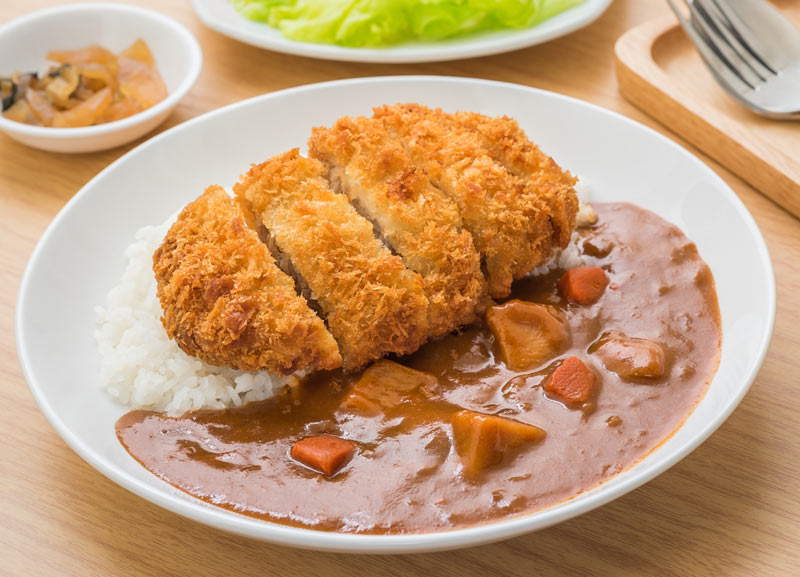
Katsu curry is basically a chicken or pork cutlet (‘katsu’, ‘cuts’, geddit?) on a bed of rice with Japanese curry sauce poured over the top or on the side.
Most Japanese katsu curry recipes I’ve found online include the recipe and method for making a Japanese curry sauce and then the instructions for making a panko breadcrumb coated escalope. For me, that’s quite a lot of effort to go to for something I could happily eat as a normal dinner on a regular basis.
So now you know the secret of how to make an easy curry sauce, why not turn that into a delicious katsu dish by using a chicken or turkey breaded escalope which you can find either chilled or frozen in any supermarket. Make sure it’s a plain one, though, and not a southern fried version as that won’t give you a very ‘Japanese’ taste!
OK, it’s not quite as nice as a deep fried, panko-coated version but grilling or oven cooking is easier, less messy and healthier too.
Cook your escalope as instructed on the packet and slice it up before placing on a bed of sticky rice and covering in delicious curry sauce.
Serve it in a Japanese curry bowl and no one will know the difference. Well, not enough to complain at any rate.
Make square Japanese omelette in a round pan
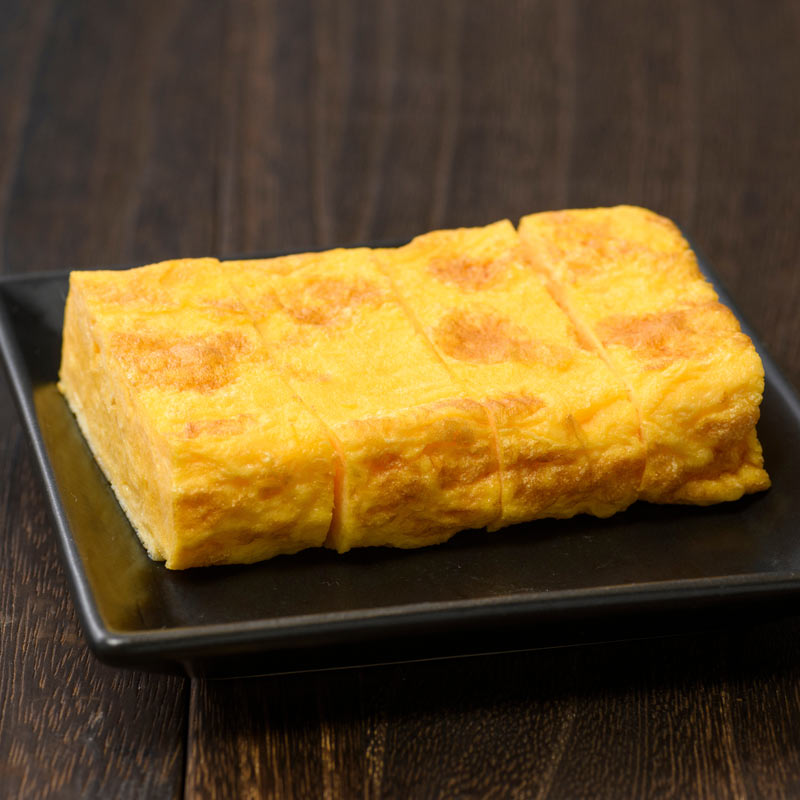
Japanese omelette or ‘tamagoyaki’ is delicious. The traditional omelette is made from frying thin layers of egg mixture rolled over and over to form a rectangular block. As well as beaten whole eggs it contains a little sugar, dashi stock (fish stock) and sometimes mirin or soy sauce.
Normally it’s made in a little rectangular frying pan which obviously helps to achieve the square shape. However, if this isn’t something you cook on a regular basis then buying a pan particularly for the job, especially as it’s not something you normally find in normal homeware departments, might not be something you can be bothered to do.
It is, of course, possible to make tamagoyaki in your regular frying pan, and you can find several YouTube videos showing you how. Here's a good one:
- How to make Tamagoyaki Japanese Omelette using "Large" Round Pan
- Pan! Japanese Tamagoyaki omelet recipe| Easy egg roll recipe
Dashi from a packet
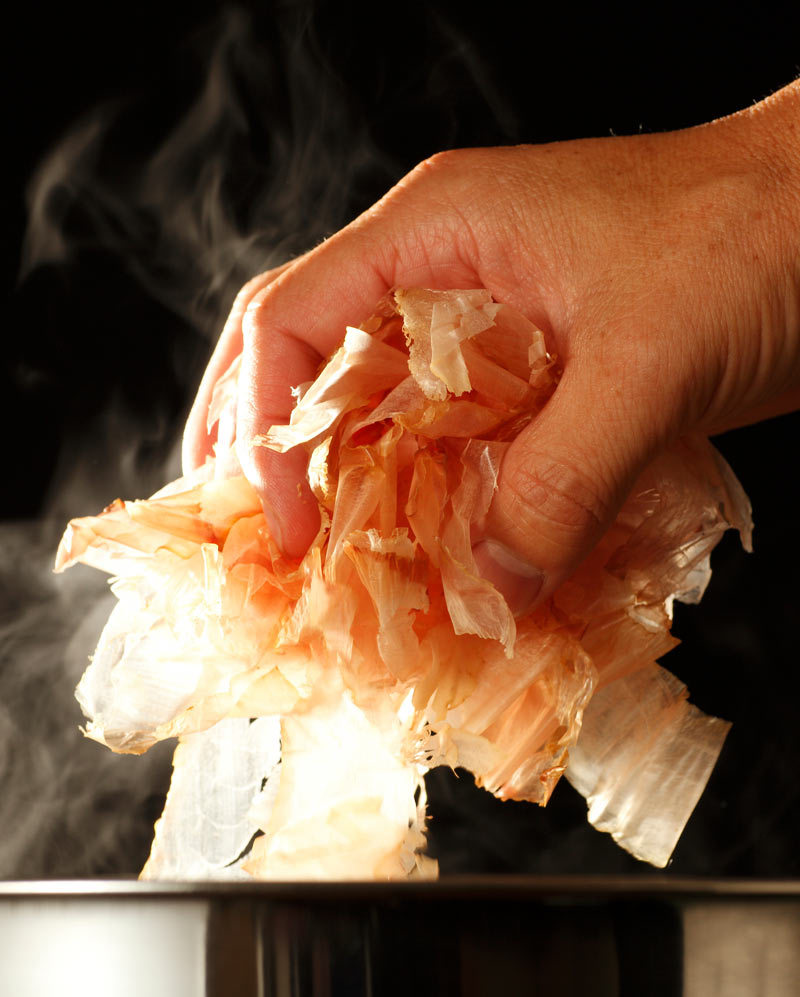
And while we’re on the subject, what do you know about dashi?
Dashi stock is a staple of Japanese cooking and forms the base of many soup and noodle dishes. There are vegan alternatives, but most dashi is made from katsuoboshi dried fish flakes and kombu seaweed, neither of which are particularly easy to come by in the UK.
As with Japanese curry, many recipes start by telling you to make the stock from scratch using these ingredients.
Apart from the fact that you’re not likely to have the ingredients to hand, this is just another step in the cooking process and many recipes tell you to make litres of the stuff which may not be convenient if you’re just trying to make a simple soup for dinner.
However, just like stock in other food cultures, you can buy dashi in an instant powdered form which is very handy for keeping in the cupboard, quick to prepare with boiling water and means you only have to make what you need at the time.
Instant dashi may not be that easy to find but because it’s a dry ingredient it can easily be bought online or you might be able to find it at better stocked fancy supermarkets like Waitrose.
Miso soup without dashi or other seasonings
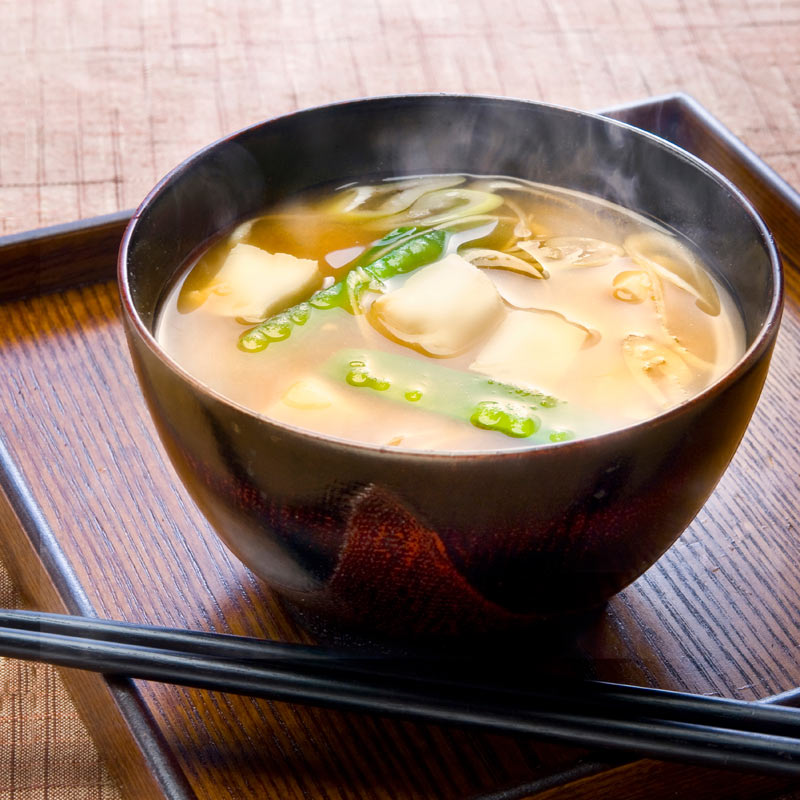
I’ll grant you that dashi is not easy to get unless you go on a special hunt for it. However, maybe it’s not always necessary…
Jars of miso paste can be found at most supermarkets and healthfood shops these days. But most miso soup recipes include dashi and other Japanese ingredients such as kombu which you might not be able to get.
However, you can really make a lovely miso soup just with a few regular ingredients and your choice of miso paste. Simply chop vegetables such as onion, sweet potato, pumpkin and mushrooms and boil them in water for about 20 minutes until nicely cooked through and then mix in the miso paste. That’s it, you really don’t need anything else!
Use silken tofu not the super firm stuff
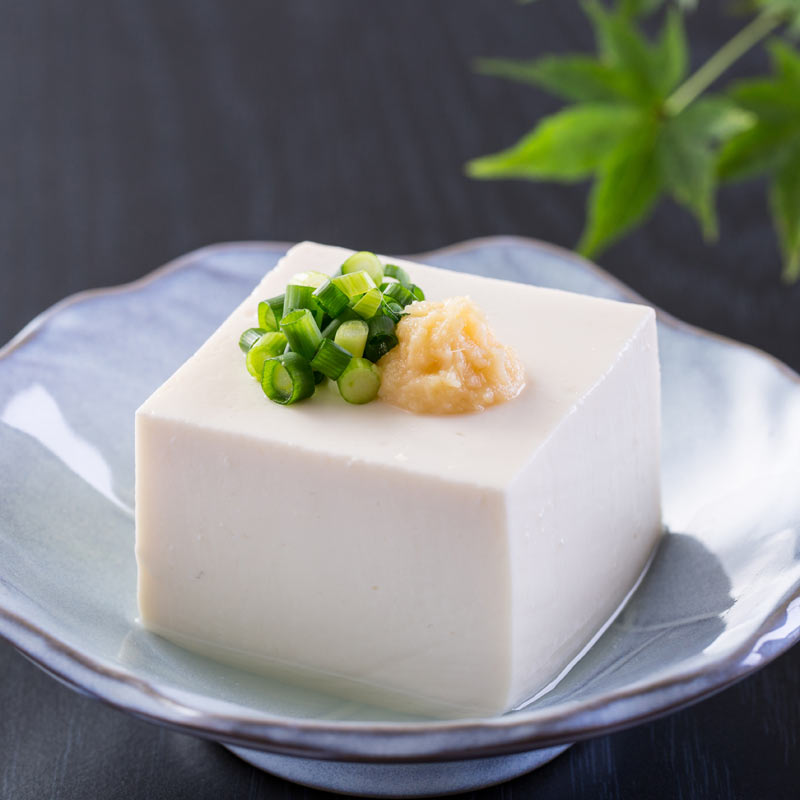
Tofu is also delicious when added to miso soup but take care which sort you buy.
Some people say they don’t like tofu and I’m convinced that's because they’re buying a kind of westernised version which I think exists because it’s easier to handle.
Tofu described as ‘firm’ or ‘super firm’ is definitely easier to cut up and stir fry but the texture is dry, rubbery and simply doesn’t taste very nice.
Silken tofu, which normally comes in a tetrapak box, certainly has to be handled carefully but it has a clean white colour and soft, smooth texture which is wonderful in miso soup.
You can absorb some of the water out of it with paper towels but don’t try to press it too much as it will fall apart. Simply cut it into cubes and add it at the end of cooking just to heat it through.
Oshizushi rather than maki rolls
And while we’re talking about getting messy with tofu, have you tried your hand at rolling your own sushi?
Sticky rice, rolling mats, knives that aren’t quite sharp enough can make this an experiment you try once and are then reluctant to go back to.

However, you might find making ‘oshizushi’ a little easier to get to grips with! Oshizushi is traditional style of sushi where the rice and topping ingredients are pressed firmly in a wooden box and cut into squares or rectangles.
The key to handling sticky rice is to keep the press and any utensils moist with cold water. I keep and small glass of cold water on the side and use a metal dessert spoon to portion the rice into the press.
With the cutting guides, you’ll find it easy to get nice even squares and won’t squash everything out of shape.
Incidentally, seasoning for sushi rice is very easy to make at home. Put a good slosh of rice wine vinegar in a glass measuring jug with a dessert spoon of granulated sugar and a nice pinch of salt. Warm it in the microwave for about 20 seconds so that the sugar and salt will dissolve and then sprinkle it over your cooked sushi rice and mix in well.
Pickled vegetables
One way to give your meal an authentic Japanese look and taste is to serve it with a few pickles on the side.
Pickles in the west tend to mean things that have been preserved in vinegar for months or years but Japanese style pickles can be made very quickly, in just an hour or so, and only need rice wine vinegar and salt.
Easy ones to try would be pickled cucumber, carrots and thinly sliced cabbage.
Basic Japanese seasoning
Sometimes trying to follow a particular recipe can be annoying if you don’t have access to certain ingredients or don’t have time to go out shopping.
However, you can give just about any meat, fish or vegetables taste that typical ‘Japanese’ umami flavour by keeping a few easy to store ingredients in your fridge or cupboard.
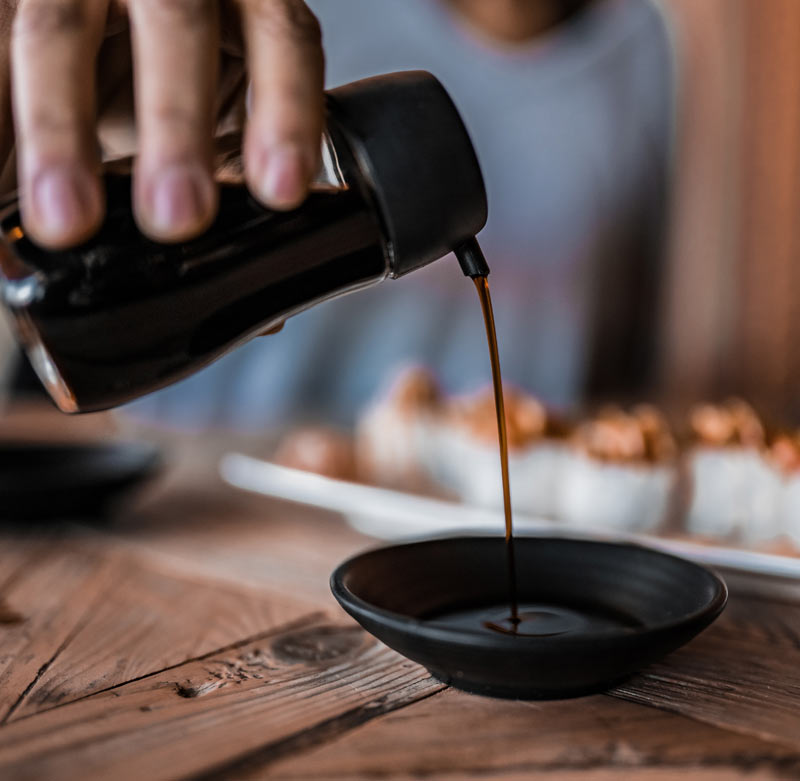
Soy sauce is a commonly know Japanese seasoning but used on it’s own doesn’t quite achieve the right taste. Look for mirin in your supermarket and, if you can get it, a bottle of sake. Sake can be expensive but you only use a little in your cooking and once open I keep mine for ages in the fridge.
Those three ingredients plus granulated sugar to thicken it are all you need to create a sweet, sticky sauce that’s packed with umami. Add water to make a simmering broth for pan fried meat or fish or use them according to taste for a yakisoba stir fry. In addition, a good slug of Worcestershire sauce added to your stir fry really gives it a great flavour.
With soy sauce, mirin and sugar you can create anything from teriyaki marinade to dipping sauce for gyoza or broth for sukiyaki. If you can get sake, it's nice to have as it adds a depth of flavour in the same way that adding wine or sherry does to western-style sauces. Many recipes will recommend additional ingredients, for example ginger, garlic and cornflour as a thickener, but you don't really need them. Stick to these three and all your cooking will taste Japanese!
Serve it on a Japanese dish
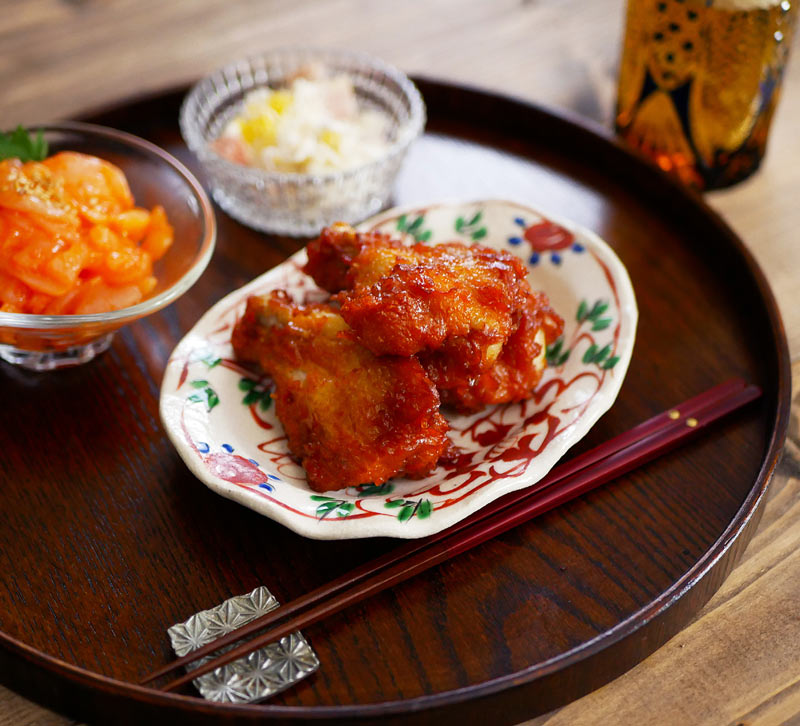
After all your hard work in the kitchen give your home cooked Japanese meal a final flourish by serving it on Japanese dishes! Small plates and bowls for dipping sauce, pickles and salads also make your table setting look special and give your family or guests the feeling of a real occasion.
Be kind to yourself
It’s nice to cook good food but it should also be accessible and easy to achieve otherwise where’s the fun? If the preparation is too stressful and time consuming you may find you no longer have the appetite to enjoy what you’ve prepared.
When we have lots of time, it’s nice to go to a lot of effort to create something amazing but with a few shortcuts and a little know-how we can still get great results, and a tasty meal, without the exhaustion.

